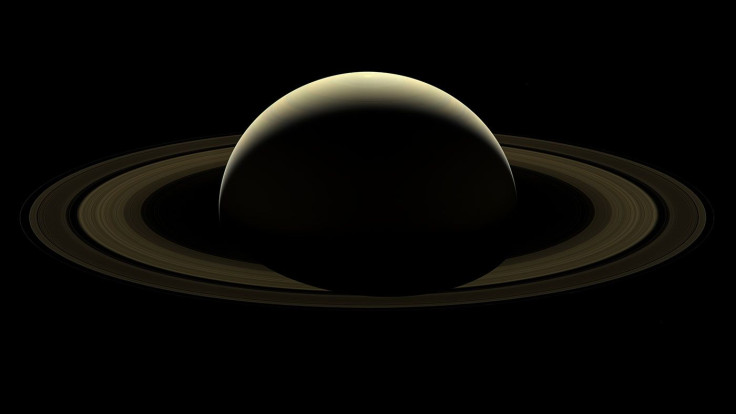NASA Releases Last Cassini Image Of Saturn And Its Rings

Two days before it plunged into the thick atmosphere of Saturn, ending its 13-year mission to the gas giant system, NASA’s spacecraft Cassini took its last complete set of images that show the planet and its rings in all their glory. The space agency released a mosaic of those images Tuesday.
Made of 42 images, taken separately in red, green and blue light by Cassini’s wide-angle camera Sept. 13, the mosaic shows Saturn and its rings from one end to the other. The photographs were combined to produce the natural-color image released by NASA.
According to a NASA statement accompanying the picture, six of Saturn’s 62 known moons — Prometheus, Pandora, Janus, Epimetheus, Mimas and Enceladus — are also in this scene from about 750 million miles away, but they are perhaps too faint to be easily visible.
The Cassini imaging team had been preparing this farewell view for years, NASA said.
“For 37 years, Voyager 1’s last view of Saturn has been, for me, one of the most evocative images ever taken in the exploration of the solar system. In a similar vein, this ‘Farewell to Saturn’ will forevermore serve as a reminder of the dramatic conclusion to that wondrous time humankind spent in intimate study of our Sun’s most iconic planetary system,” Carolyn Porco, former Voyager imaging team member and Cassini’s imaging team leader at the Space Science Institute in Boulder, Colorado, said in the statement.
Cassini, which launched Oct. 15, 1997, was part of the Cassini-Huygens mission, a cooperative project between NASA, the European Space Agency and the Italian Space Agency. After almost seven years, it entered orbit around Saturn on July 1, 2004 and ended its mission Sept. 15, 2017.
Huygens, named after the Dutch polymath Christiaan Huygens who discovered Saturn’s moon Titan in 1655, was a lander designed to land on Titan. It did so successfully on Jan. 14, 2005, becoming the only object to have landed on a moon other than our own, and also the farthest successful landing made by any spacecraft so far.
© Copyright IBTimes 2024. All rights reserved.











